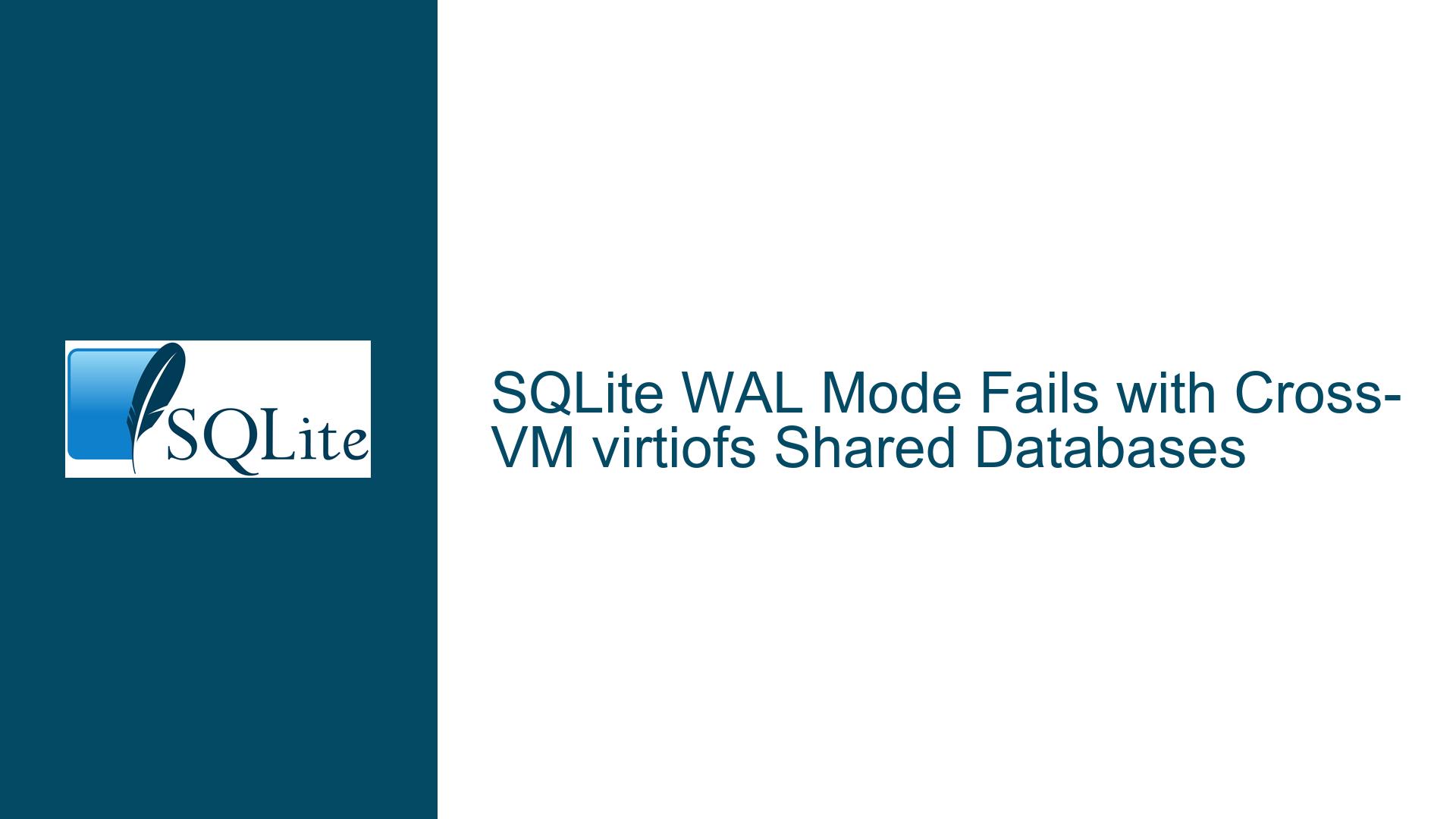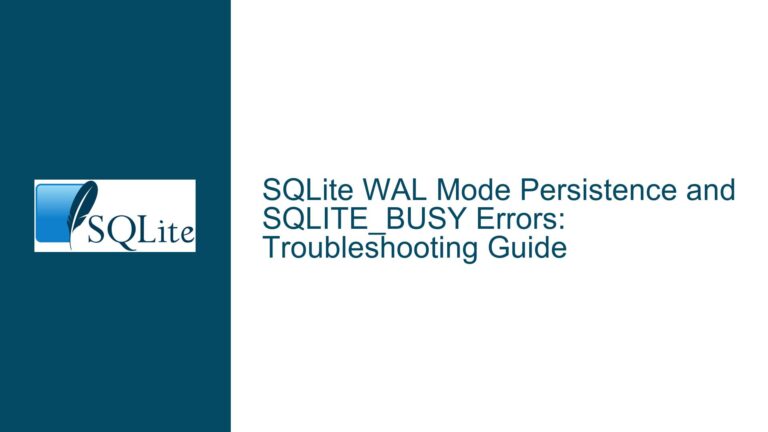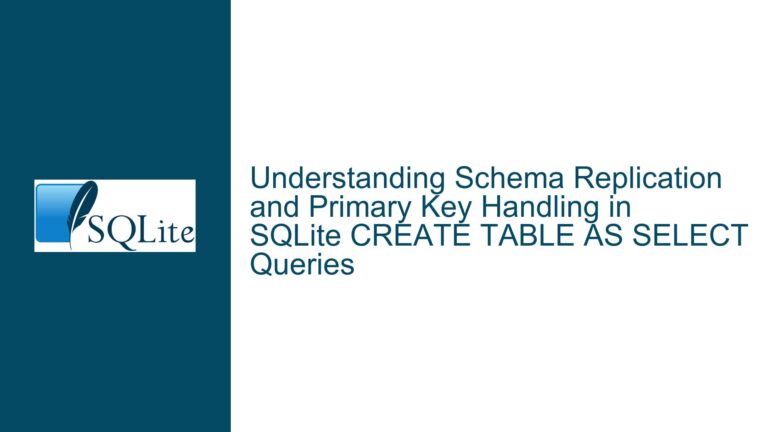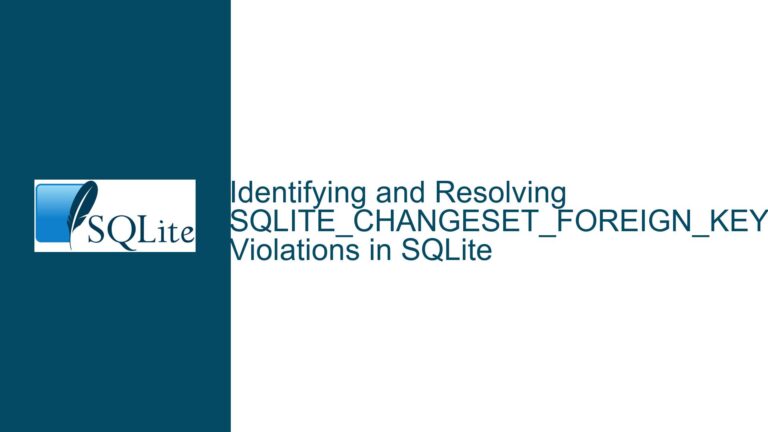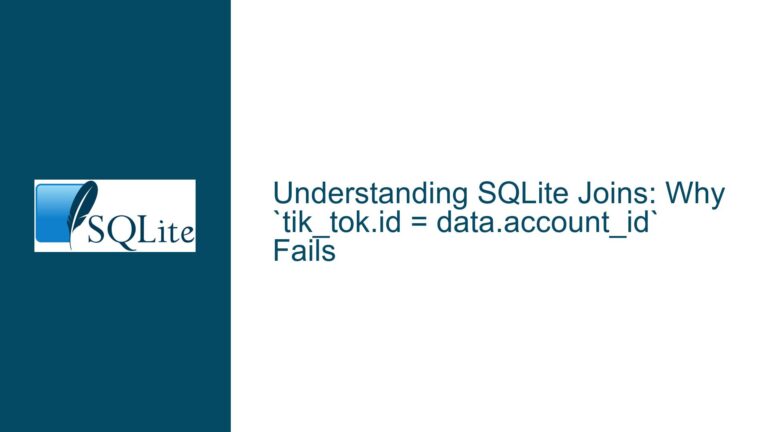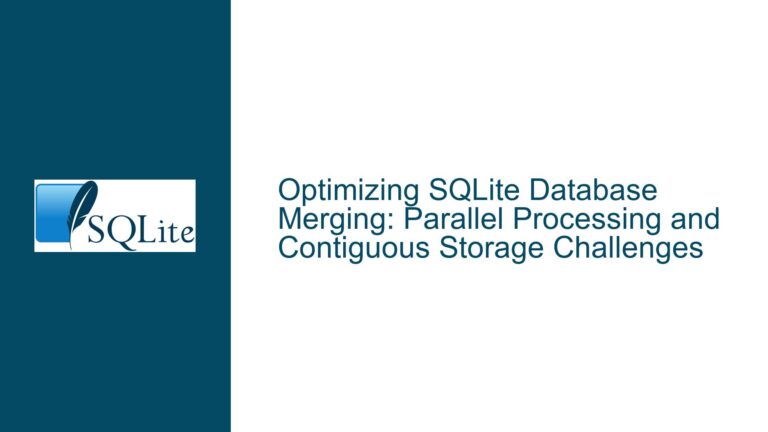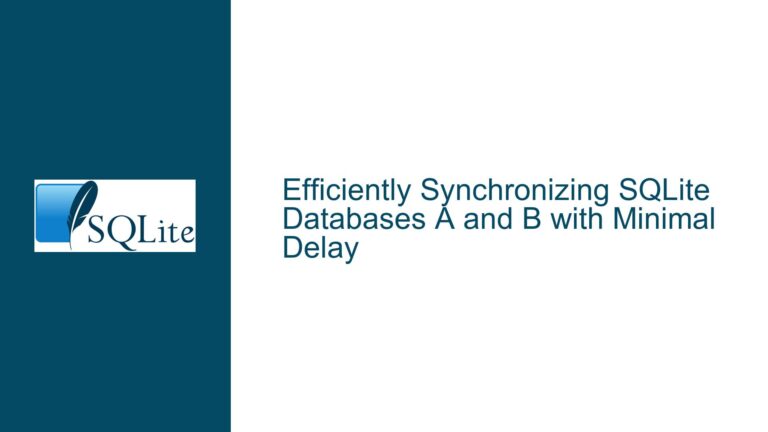SQLite WAL Mode Fails with Cross-VM virtiofs Shared Databases
Cross-VM Database Synchronization Failure in WAL Mode
Architectural Limitations of WAL Mode and Virtualized Filesystems
The core challenge arises when attempting concurrent SQLite database access across multiple virtual machines (VMs) using virtiofs with Write-Ahead Logging (WAL) mode enabled. While SQLite databases in rollback journal mode demonstrate basic cross-VM visibility through shared virtiofs directories, WAL mode implementations exhibit critical synchronization failures. Database modifications made in one VM become visible in another VM only after complete process termination and restart of the writing connection, indicating fundamental coordination failures in transaction management.
This behavior stems from architectural differences between SQLite’s journaling modes. Rollback journals utilize file locking mechanisms that virtiofs can propagate across VMs through host kernel mediation, while WAL mode requires additional shared memory coordination that virtiofs implementations typically cannot support across VM boundaries. The virtualization layer creates isolated memory spaces between VMs that prevent proper implementation of WAL’s memory-mapped I/O requirements, even when using shared filesystem directories.
Virtiofs Shared Memory Limitations and WAL Requirements
Three primary factors combine to create this synchronization failure:
Virtiofs Cross-VM Memory Isolation: While virtiofs enables file content sharing between VMs through paravirtualized filesystem operations, it does not implement shared memory regions across VM boundaries. SQLite WAL mode requires all database connections to share memory-mapped access to the write-ahead log through the same shared memory object (shm). Each VM maintains separate page caches and memory mappings for the same virtiofs-hosted WAL file, leading to desynchronized views of database state.
SQLite WAL Mode Memory Coordination: The WAL implementation depends on atomic memory operations across processes through shared memory regions. Section 8 of SQLite’s WAL documentation specifies that all database connections must share the same host environment’s memory subsystem for proper coordination. Virtual machine boundaries create separate memory management units (MMUs) and page table structures that prevent cross-VM atomic operations on shared memory addresses, even when accessing the same physical storage backend.
Locking Mode Misconfiguration: While the EXCLUSIVE locking mode suggestion from SQLite documentation attempts to mitigate coordination issues, it fails in cross-VM virtiofs scenarios because locking implementations in virtiofs differ from traditional network filesystems. Virtiofs implements POSIX-style file locking through the host kernel’s inode locks, but these locks are VM-specific rather than global across all VMs sharing the directory. This results in multiple VMs simultaneously acquiring conflicting exclusive locks due to virtiofs’ per-VM lock tracking.
Workflow Validation and Alternative Implementation Strategies
Diagnostic Verification Steps
Confirm Shared Memory Support: Execute
PRAGMA locking_mode;andPRAGMA journal_mode;in both VMs to verify WAL mode activation. Check for hidden.shmfiles associated with the database. Attempt direct shared memory operations between VMs using/dev/shmmounts to validate virtiofs memory sharing capabilities.Locking Behavior Analysis: Use
lslocksorflockdebugging tools on the host system to observe file locking patterns. In virtiofs configurations, notice that locks appear as host process-specific rather than global across VMs, explaining why EXCLUSIVE mode fails to prevent concurrent access.WAL File Synchronization Test: Create a test script that writes sequential timestamps to the database from VM1 while VM2 continuously reads the last entry. Observe that rollback journal mode shows near-real-time updates (1-2 second delay), while WAL mode requires VM1 process termination before VM2 sees updates.
Configuration Solutions
Filesystem Switch to Network-Aware Protocol: Replace virtiofs with NFSv4 or SMB/CIFS implementations that support global file locking across clients. Configure SQLite to use these network filesystems with appropriate mount options (
nolockdisabled,hardmounts). Note that this introduces latency tradeoffs but enables proper cross-VM locking.Single-Writer Architecture: Designate one VM as the exclusive database writer using WAL mode, while other VMs access the database through read-only connections or SQLite’s online backup API. Implement application-level notification systems (e.g., inotify or websockets) to trigger cache invalidation in reader VMs when changes occur.
Alternative Journaling Modes: Revert to rollback journal mode with enhanced synchronization settings. Combine
PRAGMA journal_mode=DELETE;withPRAGMA synchronous=FULL;andPRAGMA locking_mode=EXCLUSIVE;to maximize data integrity. Schedule periodic writer VM checkpoints usingPRAGMA wal_checkpoint(TRUNCATE);when using mixed journal approaches.
Advanced Implementation Techniques
Shared Memory Proxy Service: Develop a host-level daemon that manages SQLite’s WAL shared memory regions and proxies access from multiple VMs. This service would translate virtiofs memory operations into cross-VM IPC messages, maintaining a global view of WAL state. Requires custom virtiofs extensions and SQLite modification through virtual tables or VFS shims.
Database Sharding with Merge Policies: Split the dataset into VM-specific SQLite databases using ATTACH commands, with a consolidation process during low-activity periods. Implement triggers or foreign key constraints with application-level conflict resolution to maintain consistency across shards.
Hypervisor-Assisted Memory Mirroring: Configure QEMU/KVM with shared memory regions between VMs using ivshmem or similar PCI passthrough devices. Map these regions to SQLite’s WAL shared memory files through symbolic links or bind mounts. Requires careful NUMA configuration and memory ballooning adjustments to maintain performance.
Each approach requires rigorous testing with SQLite’s test harness and filesystem-specific fault injection to validate crash consistency. Performance benchmarks should compare transaction rates and latency distributions across different synchronization methods. Ultimately, the virtiofs architecture proves fundamentally incompatible with SQLite WAL’s cross-process memory requirements, necessitating either journaling mode changes or significant infrastructure modifications for proper cross-VM database coordination.
